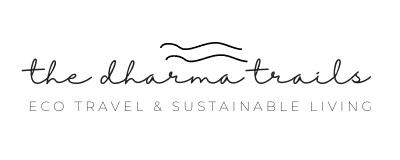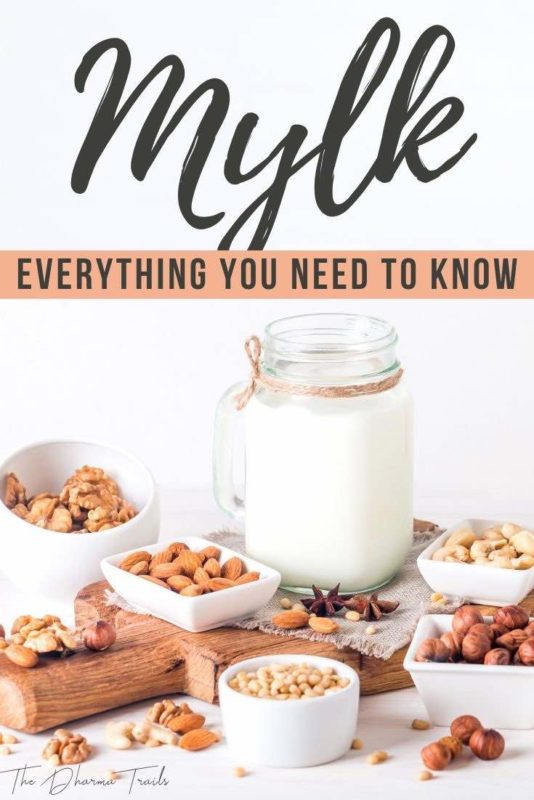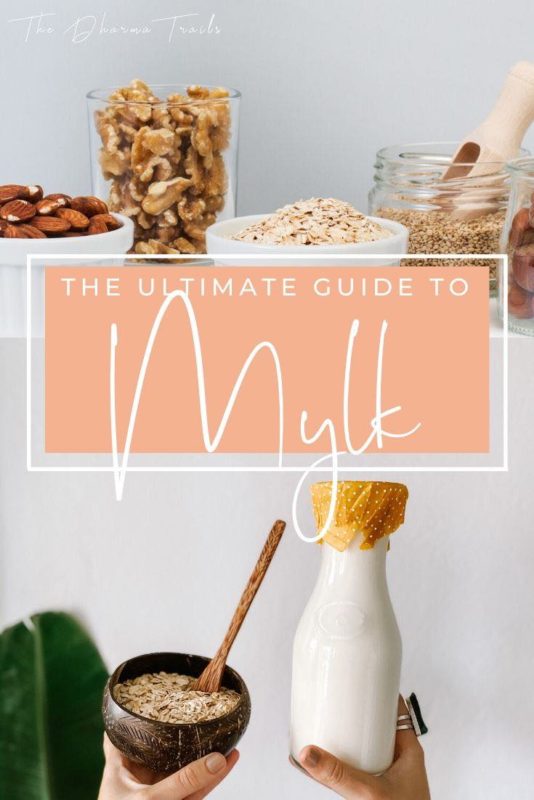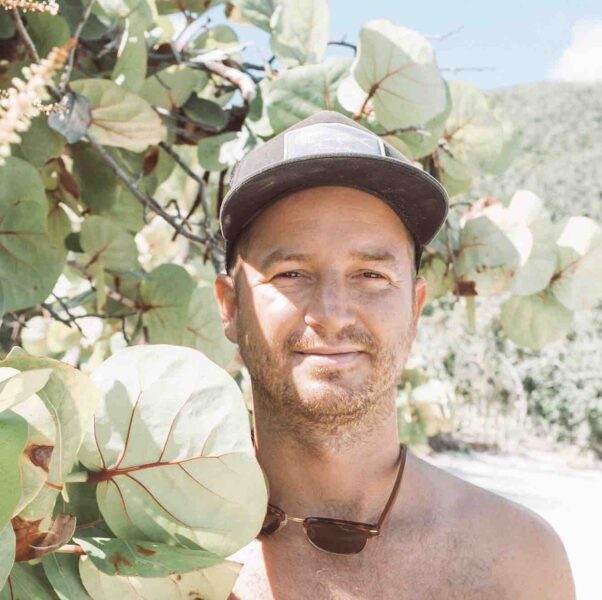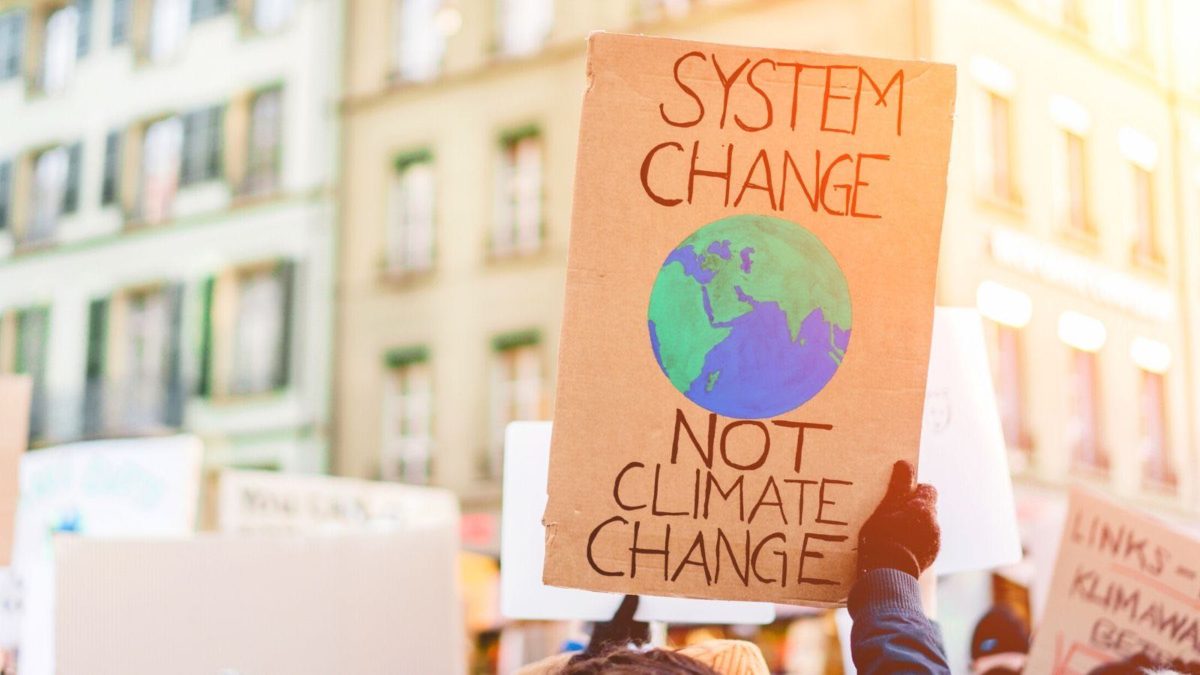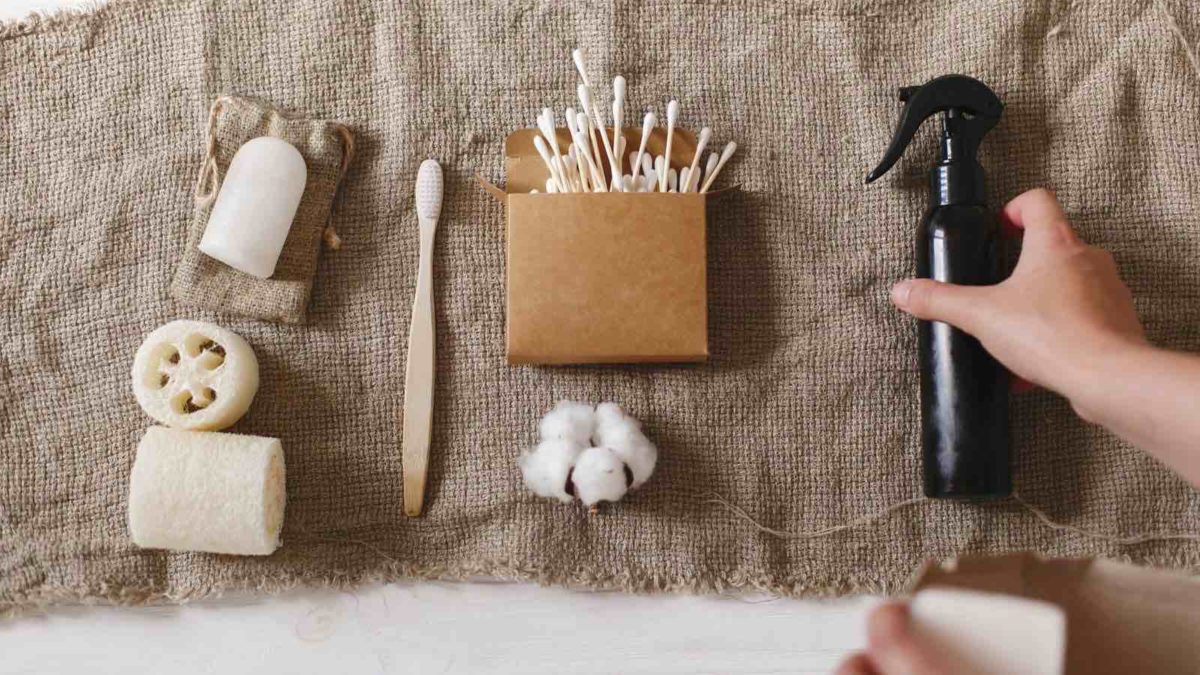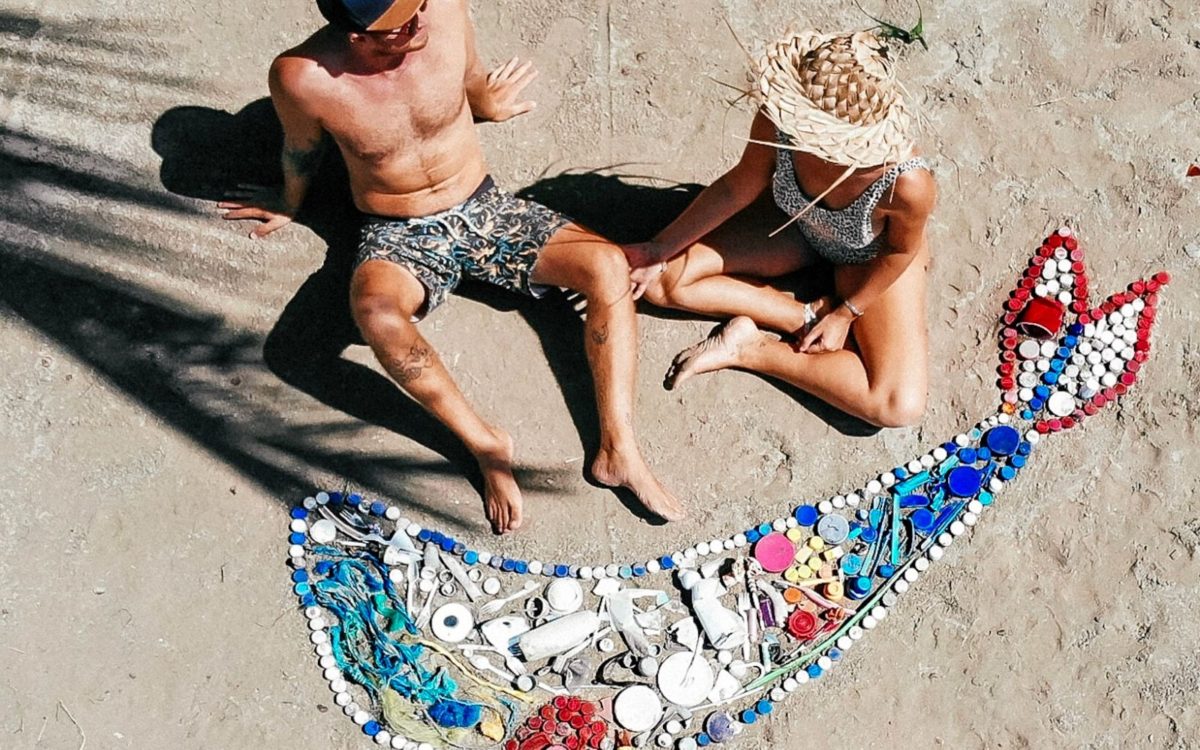Mylk is an alternative way of spelling “milk” and is associated with dairy-free products. But why is it spelled differently, is it good for you and can you make it at home?
These questions are more will be answered in this post about all things Mylk.
Table of Contents
What is Mylk?
Mylk is not only an alternative spelling for “milk”, but it is also a separation of identities. Long-time vegans have heard and seen the term Mylk around for a while. But it’s only recently hit the mainstream media.
The term Mylk was not developed to trick people. No one selling or using Mylk products is trying to hoax their consumers into thinking that they are buying dairy milk. In fact, it’s quite the opposite. The term Mylk provides a new ground on which we can build awareness and trust in dairy alternatives.
Whether you’ve switched from dairy milk, or you’re thinking about switching or even just adding something new to your diet. The term Mylk allows a clean slate. One that does not have ties to the dairy industry or the dairy product (chemically, biologically or sustainably).
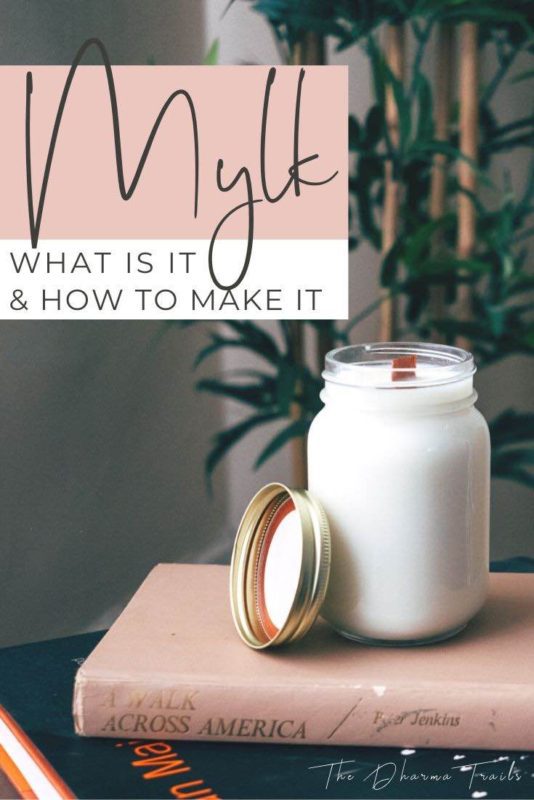
Is there a legal reason for the name change?
It might seem arbitrary but there have been lawsuits in the USA regarding the use of the term “milk” in dairy-free alternatives.
The dairy milk industry has been significantly impacted over the last decade by various array of alternative products. Between 2012 and 2017, sales of non-dairy milk grew over 60%, while dairy milk sales dropped 15%.
It’s not really surprising that dairy-free alternatives are causing disruption to the way things were. And some people aren’t happy about it.
The definition vs. reality
The USA FDA “Milk” Standard (Revised as of April 1, 2019) states that “Milk is the lacteal secretion, practically free from colostrum, obtained by the complete milking of one or more healthy cows.”
“The FDA has concerns that the labeling of some plant-based products may lead consumers to believe that those products have the same key nutritional attributes as dairy products, even though these products can vary widely in their nutritional content.”
The U.S. Ninth Circuit Court of Appeals dismissed this claim, stating that “almond milk isn’t “nutritionally inferior” to cow’s milk because “two distinct food products necessarily have different nutritional profiles.”
Legally, you can still call non-dairy milk, milk.
The Oxford Dictionary’s definition (and most recognized dictionaries) of the word milk includes “the white juice of some plants and trees”. So, you can call it what you want, but it’s still milk.
While the cases against alternative milk products have been dismissed in court. It seems not only easier and less confusing but just better to be disconnected from the term “milk”. Hence why the word “mylk” is going to become increasingly popular.
Why have a dairy milk alternative anyway?
If you’ve grown up drinking dairy milk your whole life, you might look at mylk alternatives and think…why? Consumers have a choice. Why they choose to buy a Mylk product is up to them, however, some common reasons include:
Lactose Intolerance
Facts from Genetics Home Reference :
- Approx 65% of the human population has a reduced ability to digest lactose after infancy
- Lactose intolerance in adulthood is most prevalent in people of East Asian descent (approx 70 to 100%)
- Lactose intolerance is also very common in people of West African, Arab, Jewish, Greek, and Italian descent
- Only about 5 percent of people of Northern European descent are lactose intolerant.
Animal Rights & Treatment
Many people would like to think that their milk comes from a small, wholesome farm. One where the farmer squeezes fresh milk into a metal bucket each morning; pats the cow and sends it back out into a grassy field.
If you live in a small, dairy community or buy milk from a farmers market, this might be the case. However, for the most part (around 90% of milk in the USA) comes from mass-produced farms.
Mass production dairy farms are much more factory than they are “farm”:
- Cows are stationary most of the time. Standing in a production line, being fed and milked
- The average dairy cow produces six to seven times as much milk as they did a century ago
- They’re constantly impregnated (artificially) to keep lactating
- Hormones are pumped into them to increase milk production
- After 3 to 4 years when production drops, they’re sold for meat
Sustainability
In general, the production of animal products has a greater environmental impact than plant based alternatives.
This is due to:
- Animals need food & space – food that’s grown to feed animals is food that could have been used to feed people
- Mass production of animals requires a lot of water and energy and creates waste
In summary (a 2018 study by researchers at the University of Oxford) noted that:
- Producing one glass of dairy milk results in almost three times more greenhouse gases than any plant-based milk
- Dairy milk requires 9 times more land than mylk alternatives
This is not to say that mylk doesn’t come at an environmental cost. We will explore which mylk options are the most and least sustainable in this article.
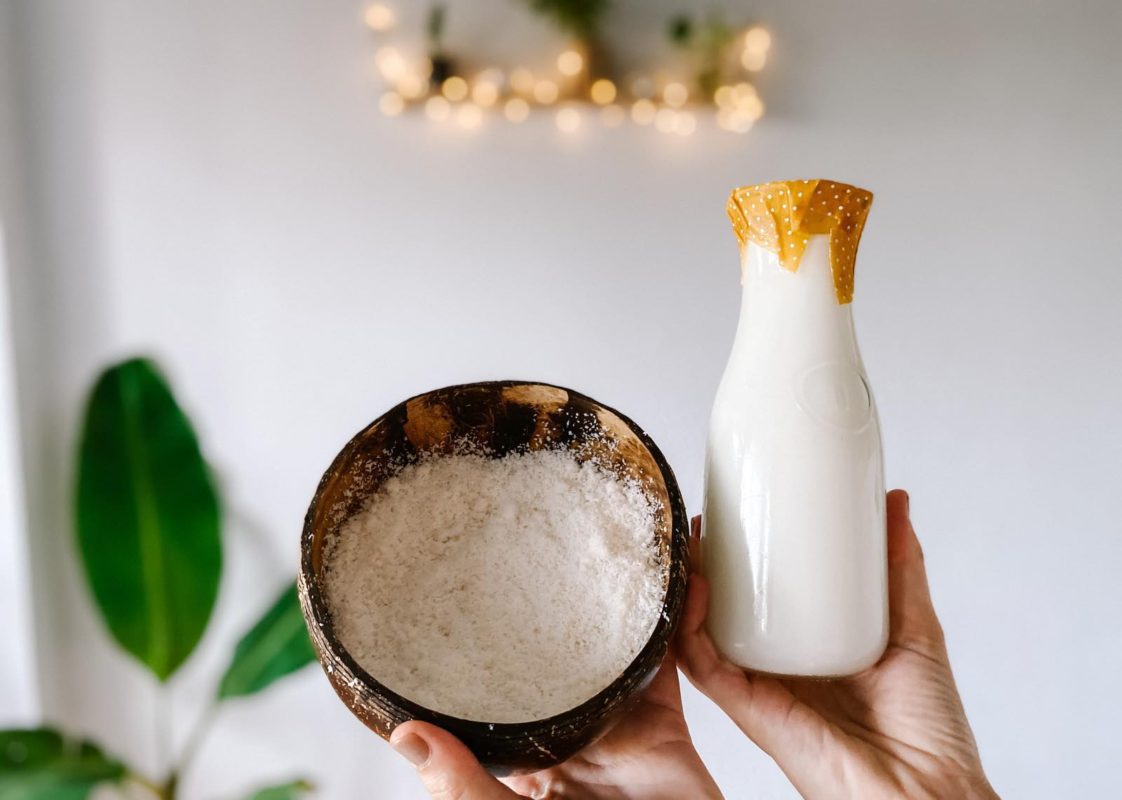
Is Mylk Vegan?
Unless a specific brand adds an animal product to their Mylk (of which they would have to state), then, yes. Mylk is a dairy free and therefore vegan alternative to regular cows milk.
Is Mylk healthy?
Mylk in its purest form is just two ingredients:
- The mylk source (nut, seed, grain, etc.)
- Water
So, when you make it yourself (recipes for various mylk types are in this post), it is as healthy as consuming the mylk source. I.e. nut mylks have similar health qualities as consuming nuts, the same is for seeds, rice, etc.
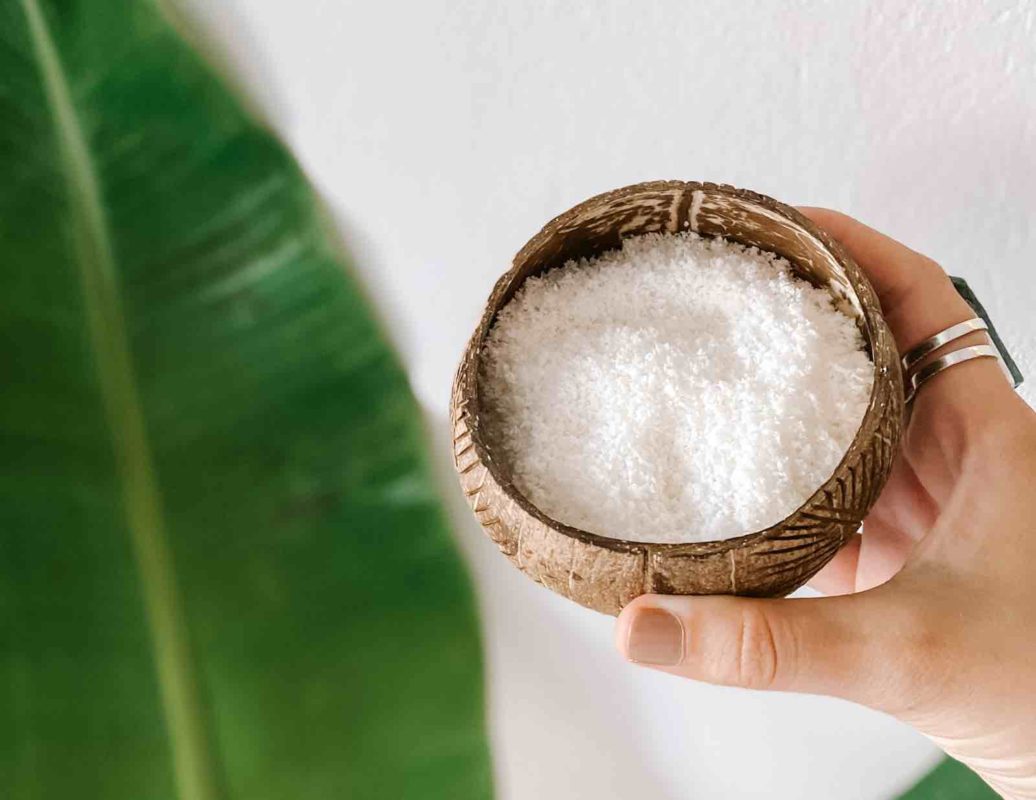
Which Mylk is more healthy?
To state that one is “more healthy” than another will depend on what the rest of your diet looks like. However, there are some ways in which we can compare the different mylk types, looking just at their health qualities:
| Mylk Type | Calories, Fat, Protein & Carbohydrates (per cup) | Nutrients & Vitamins Notes |
| Whole Dairy Milk | 146 calories, 8g of fat, 8g of protein, 13g of carbohydrates | Contains lactose. Contains calcium, Vitamin A & D. Potential contaminants, including antibiotics, pesticides, and hormones |
| Soy | 80–90 calories, 4–4.5g of fat, 7–9g of protein 4g of carbohydrates | All the essential amino acids |
| Unsweetened Almond | 30–35 calories, 2.5g of fat, 1g of protein 1–2g of carbohydrates | Natural source of vitamin E. Contain phytic acid, a substance that binds to iron, zinc and calcium to reduce their absorption in the body. |
| Coconut | 45 calories, 4g of fat, no protein, almost no carbohydrates | MCT’s in coconut may help reduce appetite, assist with weight loss and improve blood cholesterol levels more than other fats |
| Oat | 140–170 calories, 4.5–5g of fat, 2.5–5g of protein, 19–29g of carbohydrates | The beta-glucan gel in Oats binds to cholesterol, reducing its absorption in the body. This helps lower cholesterol levels. |
| Rice | 130–140 calories, 2–3g of fat, 1g of protein, 27–38g of carbohydrates | The high glycemic index (GI) of 79–92, absorbed quickly raises blood sugar levels Contains high levels of inorganic arsenic, a toxic chemical found naturally in the environment |
| Cashew | 25–50 calories, 2–4g of fat, 0–1g of protein, 1–2g of carbohydrates | |
| Macadamia | 50–55 calories, 4.5–5g of fat, 1–5g of protein, 1 g of carbohydrates | Great source of healthy monounsaturated fats which may help reduce blood cholesterol levels, blood pressure and the risk of heart disease |
| Hemp | 60–80 calories, 4.5–8g of fat, 2–3g of protein, 0–1g of carbohydrates | All the essential amino acids. Source of two essential fatty acids: the omega-3 fatty acid alpha-linolenic acid and the omega-6 fatty acid linoleic acid. |
| Quinoa | 70 calories, 1g of fat, 2g of protein, 12g of carbohydrates |
Note that these values are averages and individual brands may vary slightly.
So, which one is best?
It really depends what you’re looking for in a milk/mylk?
Some people want high carb, low calorie. Some want high protein, low sugar. It will depend on what the rest of your diet is and if you have any health requirements (diabetic, high blood pressure, etc.).
There is a mylk for everyone! The key to anything diet-related is balance. And, if you can make things yourself (in many cases) it’s better.
Store-bought Mylk and Additives
Like most mass produced food, additives are part of the package.
Consistency is key to production lines. And when you’re working with natural products like nuts or seeds, there can be significant variations. Depending on the harvest, nuts can be more oily or dryer than a previous batch, some might have a slightly different taste than others, etc.
In order to create a consistent product & improve shelf-life additives are blended into mylks. Is that a good thing or a bad thing? Let’s take a look.
Silk Example
Here are the ingredients of a leading Soy Mylk product by Silk.
Ingredients: Soymilk (Filtered Water, Soybeans), Cane Sugar, Vitamin and Mineral Blend (Tricalcium Phosphate, Calcium Carbonate, Vitamin A Palmitate, Vitamin D2, Riboflavin [B2], Vitamin B12), Sea Salt, Natural Flavor, Gellan Gum.
What are those additives?
Tricalcium phosphate is used in powdered spices as an anticaking agent, e.g. to prevent table salt from caking.
Gellan gum also works as a plant-based alternative to gelatin, which is derived from animal skin, cartilage, or bone.
Almond Breeze Almondmilk, Unsweetened Original
Here is an example of a popular Almond Mylk.
Ingredients: Almond Milk (filtered water, almonds), Calcium Carbonate, Sea Salt, Potassium Citrate, Carrageenan, Sunflower Lecithin, Natural Flavour, Vitamin A Palmitate, Vitamin D2 & D alpha-Tocopherol (natural Vitamin E)
What are those additives?
Potassium citrate is a urinary alkalinizing medication. It makes urine less acidic.
Side effects of potassium citrate (in large quantity) are:
- abdominal discomfort, nausea, vomiting
Carrageenan is an additive used to thicken, emulsify, and preserve foods and drinks. It’s a natural ingredient that comes from red seaweed (also called Irish moss).
Are additives in store-bought mylks bad?
In an ideal world, we all have the time to grown our own almonds, harvest them and turn them into a delicious mylk every couple of days.
The reality is that our lives are busy and it is much more efficient for companies to specialise in single products so that we as consumers can buy them on demand.
This product on demand approach comes with conditions. Consumable products have to be consistent and have to be able to last on shelves. This requires additives.
Are additives bad for you?
In the above-mentioned example. The additives are not bad for you in small to moderate doses. However, if you have the time, why not try to make mylk yourself at home and skip the additive process.
Click here to jump straight to DIY Mylk Recipes.
Which Mylk is More Sustainable?
As previously stated, from a sustainability perspective, ALL Mylk options are better than dairy milk.
But out of the various Mylk types, which one has the least environmental impact? Which are best if you’re trying to save the earth? Talking about product sustainability is like opening a pandora’s box of questions.
Things to consider include:
The Production Side
What kind of impact does growing the natural product have on the local environment:
- Land clearing, effects on the natural food chain and wildlife, local human populations
- Methods of harvesting, are sustainable practices being used (machines leaking oil into rice paddies that leach into the nearby stream), what kind of fertilizers are being used and what effects they have
- What kinds of chemicals are being used in the cleaning of equipment and processing plants
- What measures are they taking to reduce waste and save water
Packaging & Distribution
Assuming all the most sustainable practices have been undertaken to produce a product if it then packages it into small, single-use (non-recyclable containers or plastic bags) it’s overall sustainability is going to be poor.
Or if everything is done sustainably up to the distribution stage where items are shipped on gas-guzzling, oil-dripping trucks that have a huge carbon footprint.
The locality is also crucial. Is it more sustainable to buy one kind of mylk if it was produced by a less sustainable farm but it only had to travel one suburb to you or to purchase a mylk from a super sustainable farm but it had to travel across the world and go through 5 different city distribution centers?
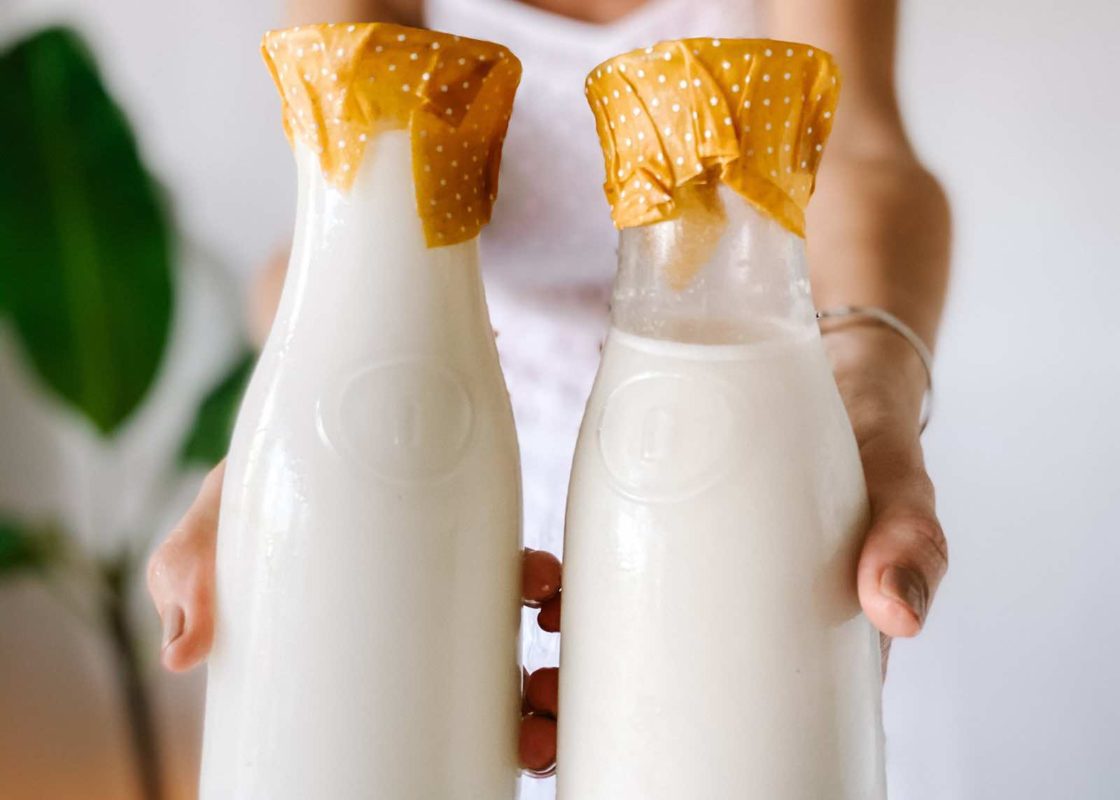
Mylk types ranked for their sustainability
The following examples consider the production side of various mylks with a focus on one key environmental element for each. They’re ranked from relative best to worst.
| Mylk Type | Environmental Considerations |
| Oat | Oats are already in huge supply & can are grown in cooler climates so deforestation is not a serious threat. Oat farms usually do spray pesticides, which is a “possible carcinogen”. |
| Soy | While large areas of rainforest have been burnt for soy farms, these are to feed cows. Another reason to eat less meat. Actual soy farms designed to produce soy milk are considered a “joint winner on the sustainability scale”. |
| Hemp & Flaxseed | These are still considered “niche” and come from relatively small farms that are easier to control environmentally. |
| Hazelnut | The hazelnut tree is “superior to almonds” for sustainability as they are pollinated by the wind instead of commercial honeybees. |
| Rice | Rice is said to be the worst emitter of greenhouse gases. “Bacteria breeding in rice paddies pump methane into the atmosphere and large amounts of fertilizer pollute waterways.” |
| Almond | “Almonds require more water than any other dairy alternative”. They’ve also been hugely impactful on the USA’s honeybee population. The almond industry in California is responsible for the death of around 20% of the commercial honeybee population in 2019. |
| Coconut | Coconuts grow in the tropics where “the pressure to meet global demand is causing exploitation of workers and destruction of rainforests.” Similar to that of palm oil products. Be sure to look for Fair Trade Certified Coconut Mylk. |
These examples are related to the mainstream, store-bought products. Obviously, if you grow your own coconuts and make your own coconut milk it’s not the same. Or if you go to the farmers market and buy any locally sourced ingredients, etc.
Where to Buy Mylk
Almost all markets and shops around the world have some kind of mylk (dairy free) option nowadays. Brands like “Almond Breeze” and “Silk” have dominated for the last few years, however, there are a few new kids on the block who are mixing things up.
Like any type of product, there are boutique versions that offer smaller scale, higher quality goods. These are a few to consider.
GoodMylk Co.
The Southern California company GoodMylk Co. produces almond milk in packets rather than bottles. They boast:
- 100% Whole organic almonds
- 6x more almonds per container than bottled brands
- 4 ingredients or less, 100% real food, no shortcuts
- Zero processed sugars
The company also makes Hemp Mylk and an almond creamer.
Rebel Kitchen
Rebel Kitchen supplies their organic coconut mylk and water around the world. Their mylks look a little like this:
- spring water,
- coconut cream (organic),
- brown rice syrup (organic),
- cashew (organic),
- Himalayan salt,
- nutritional yeast
They’re also a Certified B Cooperation and donate 1% of profits to environmental projects.
Mylk Plus
Mylk Plus is a British company started by 22-year-old Camilla Ainsworth (who was a finalist on the BBC’s The Apprentice).
What sets MylkPlus apart from the more generic almond milk brands (apart from the spunky packaging and social media pages) is its higher percentage of nuts per package (“three times the nut content of the market leader”).
They also have some flavoured mylk options using “100% natural, plant based, vegan, sugar free flavourings”.
Did the Mylk Guys Close Down?
Yes. The Mylk Guys were a boutique Mylk company, though they have closed down their operation. Here is their official send off.
How to Make you own Mylk?
It is surprisingly easy to make your own mylk at home. To make mylk in its pure form there are just two ingredients:
- The mylk source (nut, seed, grain, etc.)
- Water
Most of the mylk recipes (assuming you have the ingredients) take only a few minutes to make.
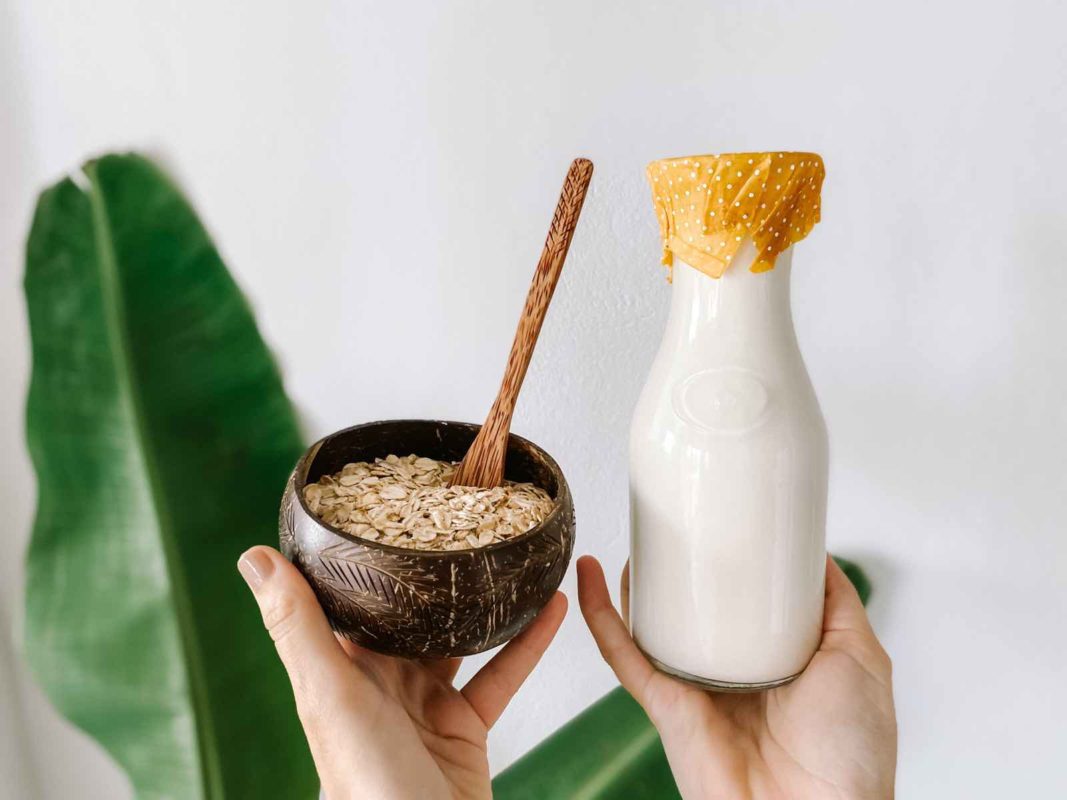
The benefits of making your own Mylk
Apart from the satisfaction of making something that tastes good on your own, here are a couple of benefits to making your own mylk at home:
- There are no additives
- You can make it as you need (as it can be made in a matter of minutes) you can make it fresh daily
- It is cheap to make (assuming you have access to ingredients)
Homemade Mylk Recipies
While the ingredients are simple (two), there is a slightly different process/ratio for each mylk type. Here are homemade mylk recipes that anyone can follow:
Oat Mylk Recipe
Using only oats and water, you can have a freshly made oat mylk in minutes following this Oat Mylk Recipe:
- 1 cup of Rolled Old Fashioned Oats
- 4 cups of filtered water
Blend ingredients until smooth and combined, strain two times, then transfer to a jar or bottle.
Learn what you can make with the leftover ingredients to keep your kitchen a zero-waste kitchen.
Coconut Mylk Recipe
A great, simple recipe to make from dried or fresh coconut. Get a little tropical in your kitchen with this Coconut Mylk Recipe:
- 2 cups of unsweetened, shredded coconut
- 4 cups of filtered water
Blend ingredients until smooth and combined, squeeze through a nut milk bag, then transfer to a jar or bottle. Store in the fridge, and shake before use.
Almond Mylk Recipe
Another simple plant-based milk to make at home. Try this Almond Mylk Recipe:
- 1 cup of raw almonds (soaked over night)
- 4 cups of filtered water
Rinse and drain the soaked almonds, add them to a blender with 4 cups of filtered water. Blend until ingredients are smooth (approx 1-2minutes). Pour into a nutmilk bag (over a bowl), and squeeze all the liquid out. Transfer to a jar or bottle and store in the fridge.
